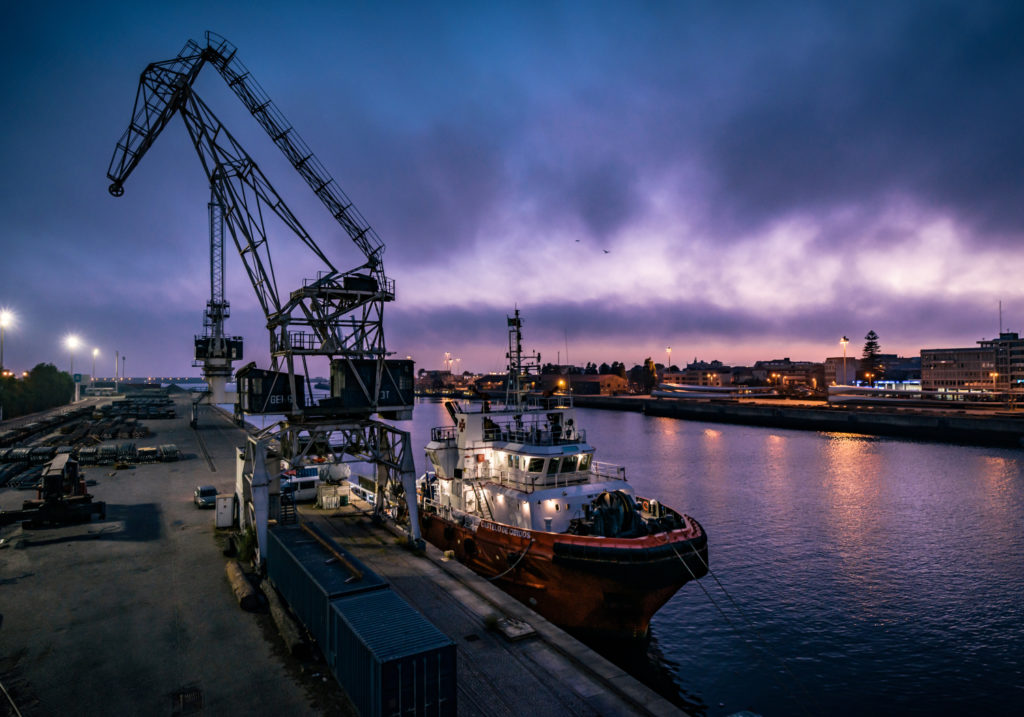There’s no question that the introduction of technology to global trade has helped the industry thrive. Whether it’s tracking shipments, more accurately weighing cargo or scanning for security breaches, the combination of ports and technology has opened up opportunities and made processes more efficient.
Technology also allows shipping and logistics companies to serve their clients through the entire shipping process. As we mentioned in a previous post, we allow our clients to access to their product at key points in our process—and we ensure their operations manager is communicating with them on a regular basis. The technology we implement sets us apart from other logistic companies, providing features to our clients unlike anyone else. Technology can help ports run more smoothly, but it can also cause additional problems and there’s always the risk that ports begin to rely too heavily on it. In many ways, it’s responsible for raising risks, especially at ports and terminals.
Security
Some technological implementations are meant to protect ports and the cities they inhabit. The Security and Accountability for Every (SAFE) Port Act of 2007 is a technology system mandated by law. When it was first announced, it required that 100 percent of U.S-bound shipping containers and cargo be scanned for nuclear threats. While this technology is advanced and would add an extra layer security to ports, the major logistical challenges surrounding that type of nuclear-detection have so far prevented it from becoming a reality. In fact, the law was waived for multiple years by two different Homeland Security secretaries.
With every new application comes the threat of system failure. The reluctance to implement a system that would prevent nuclear attacks is one example of the pressure ports face to adapt to new technology. New technologies across the board leave ports scrambling to adapt and to respond to new threats. The more technology grows, the more reliant ports become and the more vulnerable they become to cyber attacks. cyber attacks can severely inhibit terminal operations, often for months at a time, and can give criminals access to passwords and security codes.
A PwC report from 2013, revealing that 11 percent of companies around the world had lost more than $50,000 due to cyber crime.
Lack of backup systems
New technologies offer excellent opportunities for progress, but also open the door to major weaknesses if that technology fails. The use of RFID tags by the military during the Iraq War was part of a plan to more efficiently track shipments, but problems quickly arose. If tags were placed too far inside the cargo, they couldn’t be read, and if they weren’t secured properly, they would fall off. They ran into problems when there were no backup systems in place. In this case, the military was saved by the fact that they still had a few personnel that were trained when none of this technology existed. At one time, they got by using pencil and paper and could track cargo without advanced systems. These people can currently be counted on to help when technology fails, but what about when they are gone? There’s an entire generation moving into the workforce that have relied on various technologies since they were born.
The answer to this problem lies in training. Ports cannot rely solely on the sophisticated technologies they are being pushed to use and must enhance personnel training efforts. Between training and backup, ports can ensure they are covered if any of their systems fail. These backup systems will also save money by cutting back on insurance claims. Almost all claims made to insurance companies would have been preventable by operators had there been reliable procedures in place to protect against them.
Be Aware
The technology we implement is meant to serve our customers while still allowing us to maintain our relationships and keep our employees working. We value our employees and never want to run the risk of relying on technology more than humans. Shippers and carriers want three things when it comes to port and logistics facilities: climatic and political stability and consistent performance. While technology can help stabilize performance, relying on it too much can disrupt the day-to-day.
We do our part by being diligent about risks, aware and educated on the problems facing various ports and taking precautions to protect our customers.
Sources:
http://www.toclogistics.com/en_US/blog/more-robots-less-people/
http://inhomelandsecurity.com/are-us-ports-too-reliant-on-technology/

